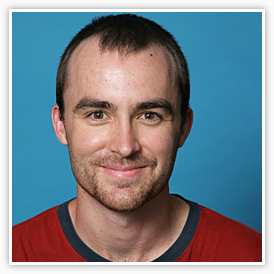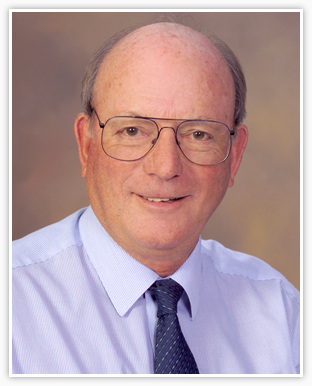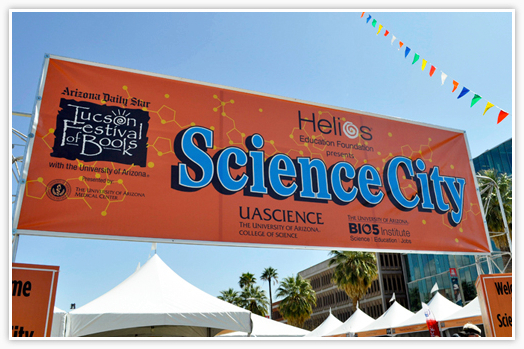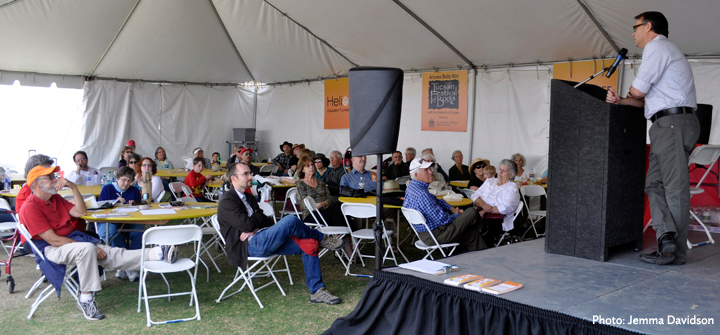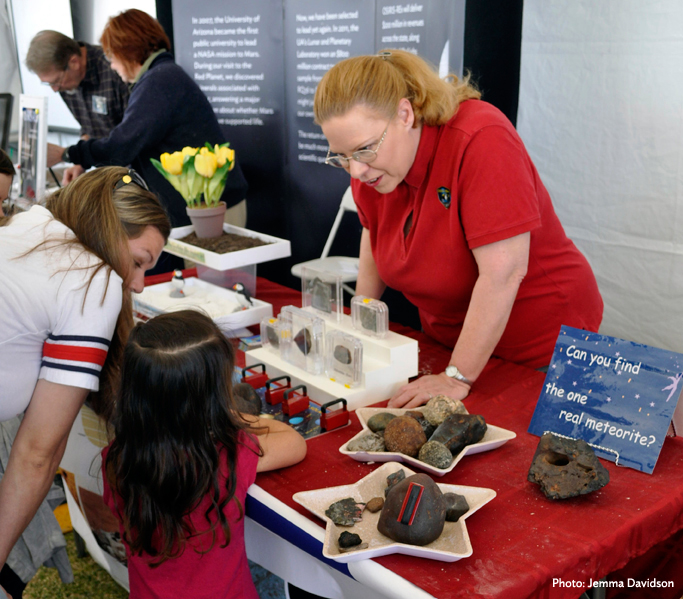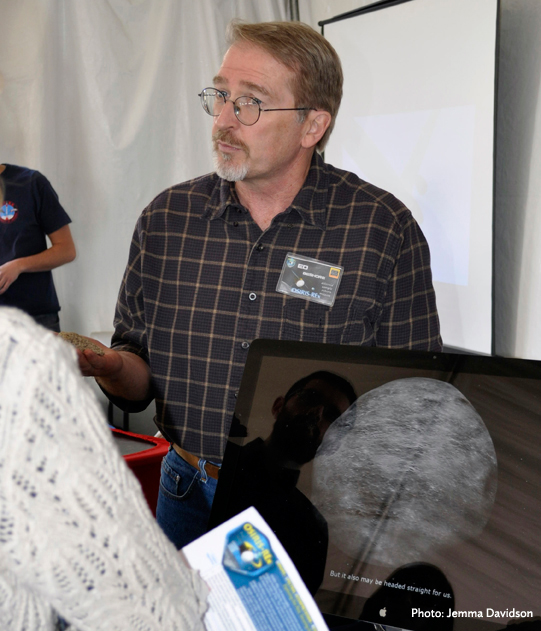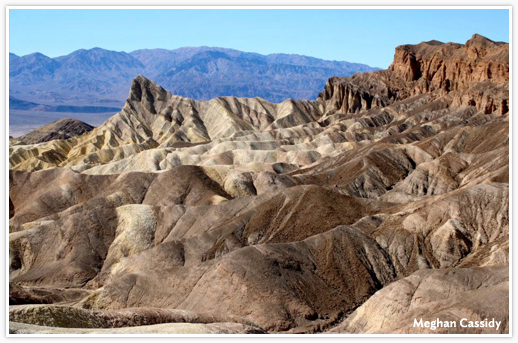
LPL Fieldtrip Spring 2012
by Assistant Professor Shane Byrne
Enthusiasm has been building for some time for us to return to Death Valley and this semester we made the long drive up there to see one of the most geologically diverse places in the world. It's rare that you can see classic examples of fluvial channel erosion, alluvial fans, dunefields, active tectonics, recent volcanism, dry lakes and salt flats all in one place. Death Valley is notoriously inhospitable today, but has been the site of lakes at many times in its past, most recently at the end of the last ice age.
On the drive to Death Valley, we stopped at the Kelso Dunes in the Mojave Desert to spend the first night. Despite the 500ft height and strong winds, we climbed up to the summit and were treated to an unusual sight. The winds had stripped off the upper dry sand in places, leaving deeper wet sand intact and revealing the internal cross-bedded stratigraphy within the dune. This is usually only seen in the frozen remnants of eroded sandstones.
We got our first view of Death Valley itself the next day from the east by stopping at Dante's View overlook. Recently, only one side of the valley has been sinking---so the alluvial fans on the west side have had little trouble spreading across the valley floor, whereas those on the east are smaller and episodically buried by lake sediments. We drove down Furnace Creek Wash towards the valley entrance and stopped to check out the diversion point. In 1941, highway workers (with bold confidence characteristic of the age) diverted this wash through the much smaller Gower's Gulch. The (unforeseen) consequences of the stream's readjustment in sediment carrying capacity have been a major headache for the Park Service, but a windfall for students of fluvial systems. The large amount of erosion that has taken place at the diversion point now threatens Route 190. At the other end of Gower's Gulch, a previously small alluvial fan is being rapidly extended with this fresh material forcing the Park Service to regularly bulldoze debris off Badwater Road.
Within Death Valley, we visited the Mesquite Flat Dunefield and saw mudflows that had emanated from nearby canyons. After spending the night at Stove Pipe Wells, we visited a nearby similar canyon (Mosaic Canyon), the inside of which is polished smooth by the regular action of debris-laden floodwater. After another long drive (Death Valley is a big park!), we stopped at Ubehebe Crater, which provides an example of what happens when magma flash-heats water underground. Steam pressure results in an explosion that forms the crater. Underground explosions, like the one that took place at Ubehebe, create craters very similar to impact craters and very different from regular volcanic calderas. Ubehebe crater is quite young, probably less than a thousand years old, and is still pristine in appearance (apart from the parking lot on the rim).
No visit to Death Valley would be complete without a trip to Racetrack Playa. At the end of a rather rugged road (we got three flat tires on this road---not unusual) lies an almost perfectly flat dry lake with boulders littering the southern margin. These boulders are what make the place so unusual, as they move along the playa, gouging tracks as they go. No one has ever seen a boulder move (unfortunately our trip was no exception), yet the tracks are clearly visible. What a great mystery! The current best theory involves ice rafts forming around the boulders in the winter, providing a sail that the wind can blow across the surface (embedded boulder included).
All good things must come to an end and the next day it was time to leave Death Valley and start home. On the way out of the valley we stopped to inspect the famous salt flats and the weird and wonderful polygonal features they contain. The action of salt is everywhere here and helps break down boulders into smaller pebbles, which can be seen at several sites along Badwater Road. At the southern exit of the Valley we paused to look at Shoreline Butte and the many strandlines etched on its flanks from Death Valley's former lakes. We spent our last night in the Mojave again beside a recent lava flow in the Cima Volcanic Field. Lava flows, both young and old, surrounded us, and the difference between them could be examined. Great examples of desert pavement (where a tightknit carpet of pebbles floats upwards on top of accumulating dust) exist here on the older flows.
Death Valley never fails to impress with its diversity of geologic processes and the often obscure interactions between them. Parts of planetary surfaces are fabulously complex and rich historical treasure troves. Death Valley is one of these special places, detailing changes in Earth's interior and climate through the rise and fall of mountains and the coming and going of lakes.


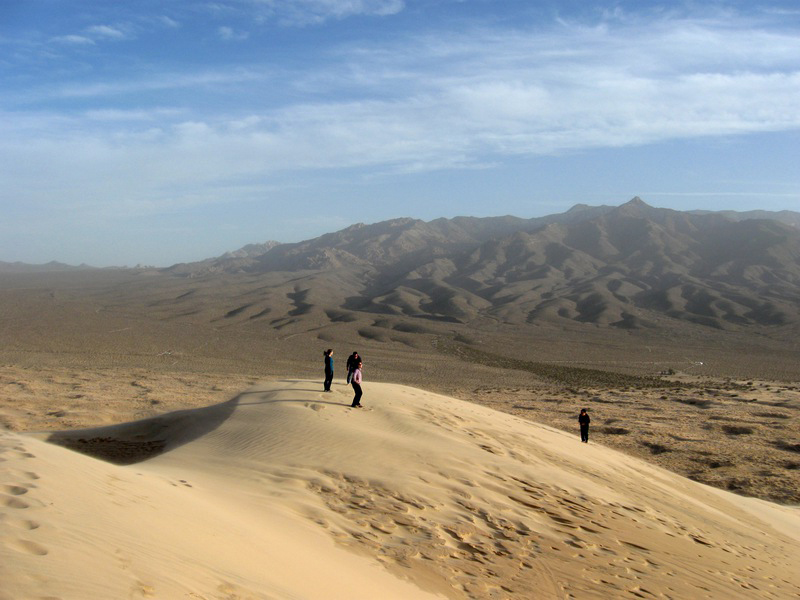
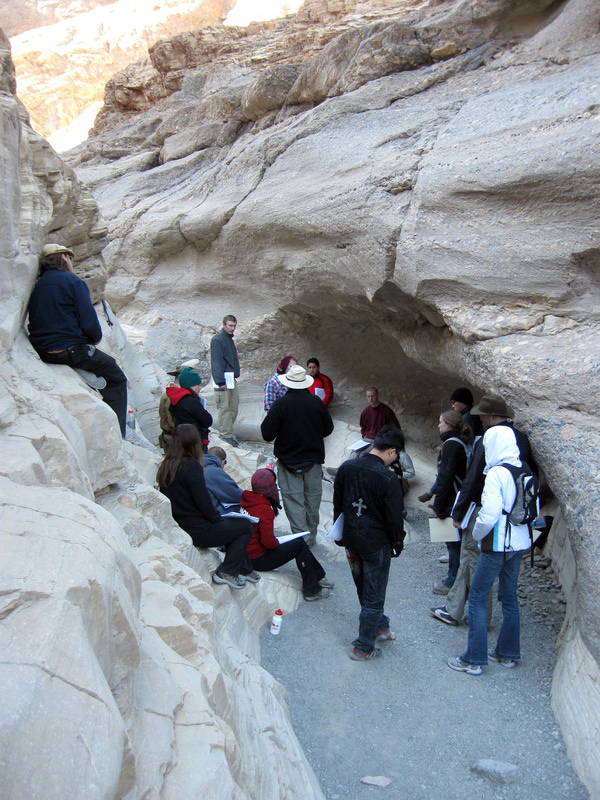
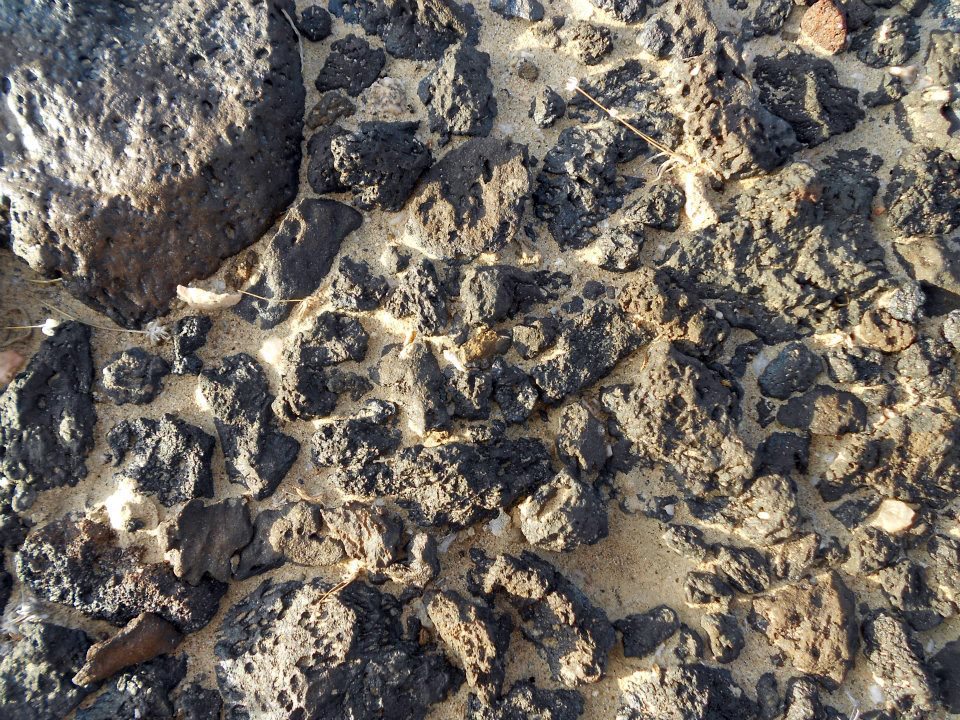
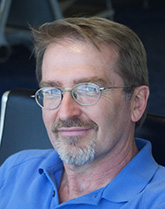 This past January, OSIRIS-REx Principal Investigator Dante Lauretta announced the formal appointment of Ed Beshore as the OSIRIS-REx Deputy PI. Ed transitioned to this role from his previous position as Principal Investigator, operations manager, and lead software engineer for the Near Earth Object (NEO) survey programs of the Catalina Sky Survey, Siding Spring Survey, and Mt. Lemmon Surveys. Steve Larson has assumed the PI role with
This past January, OSIRIS-REx Principal Investigator Dante Lauretta announced the formal appointment of Ed Beshore as the OSIRIS-REx Deputy PI. Ed transitioned to this role from his previous position as Principal Investigator, operations manager, and lead software engineer for the Near Earth Object (NEO) survey programs of the Catalina Sky Survey, Siding Spring Survey, and Mt. Lemmon Surveys. Steve Larson has assumed the PI role with 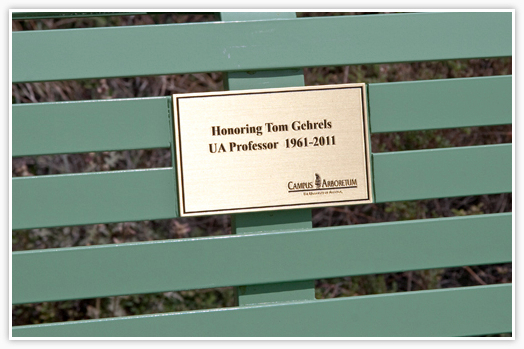
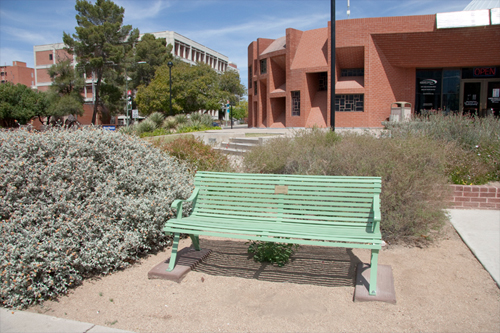
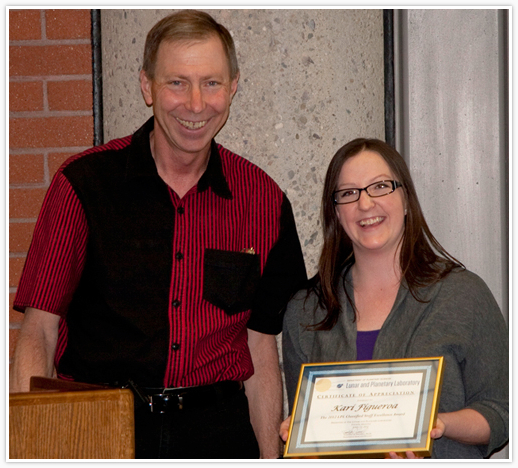
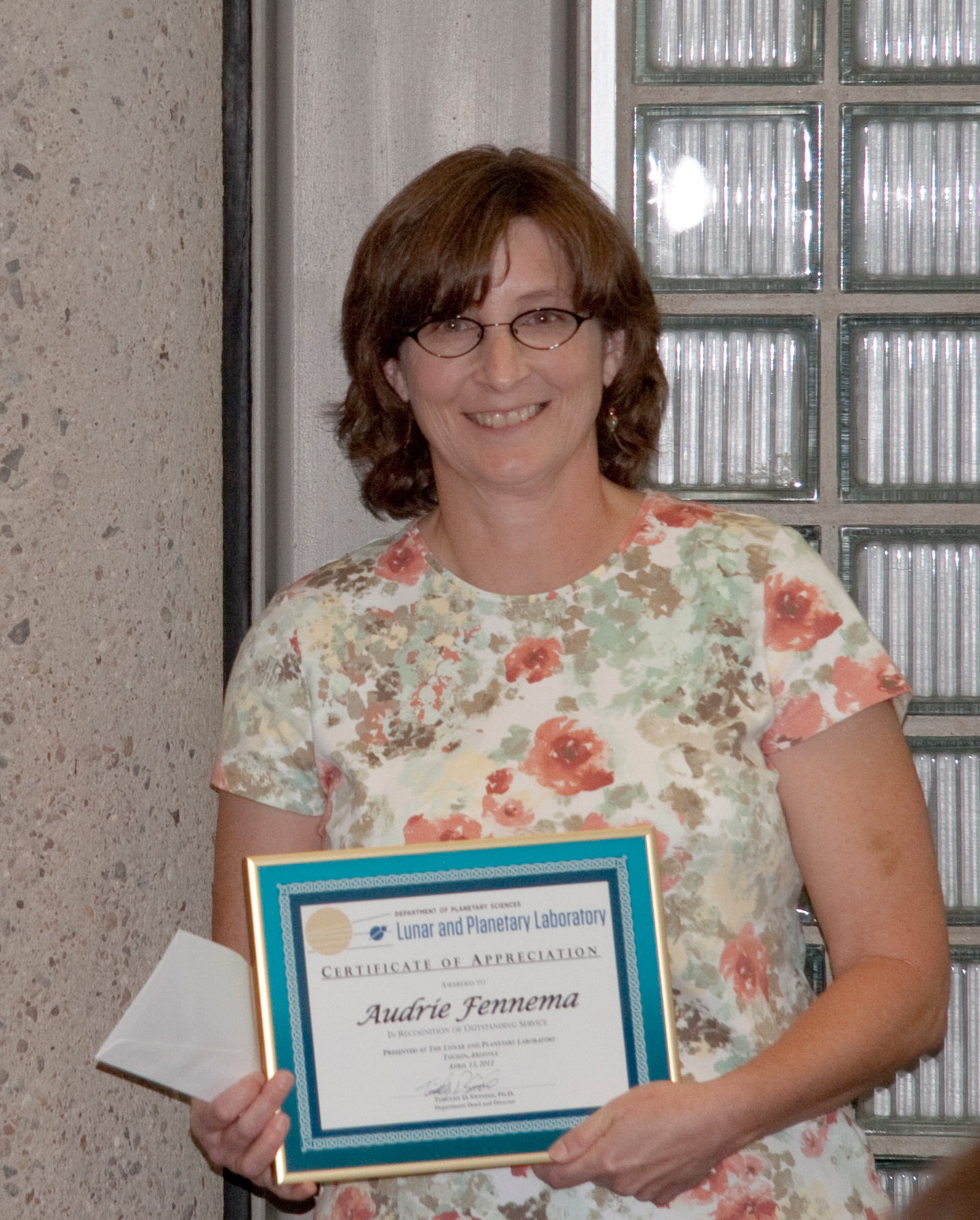
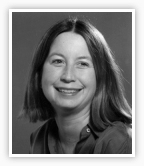 Our colleague and friend Selina Johnson passed away in December. Selina was a member of LPL's administrative staff for many years. She started at LPL as an undergraduate student in 1981, and left as a Senior Program Coordinator in 2008. Selina was lively and vivacious and we remember her big smile and hearty laugh. There was never a dull moment when Selina was in the crowd. She'll be greatly missed by all. A memorial celebration took place on February 18, 2012, at Tohono Chul Park in Tucson.
Our colleague and friend Selina Johnson passed away in December. Selina was a member of LPL's administrative staff for many years. She started at LPL as an undergraduate student in 1981, and left as a Senior Program Coordinator in 2008. Selina was lively and vivacious and we remember her big smile and hearty laugh. There was never a dull moment when Selina was in the crowd. She'll be greatly missed by all. A memorial celebration took place on February 18, 2012, at Tohono Chul Park in Tucson.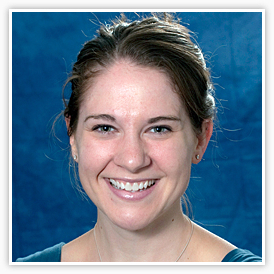 Kathryn G. Gardner-Vandy, "Partial Melting on FeO-rich Asteroids: Insights to the First Stage of Planetary Differentiation" (Lauretta)
Kathryn G. Gardner-Vandy, "Partial Melting on FeO-rich Asteroids: Insights to the First Stage of Planetary Differentiation" (Lauretta)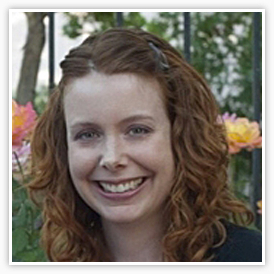 Nikole. K. Lewis, "Atmospheric Circulation of Eccentric Extrasolar Giant Planets" (Showman)
Nikole. K. Lewis, "Atmospheric Circulation of Eccentric Extrasolar Giant Planets" (Showman)